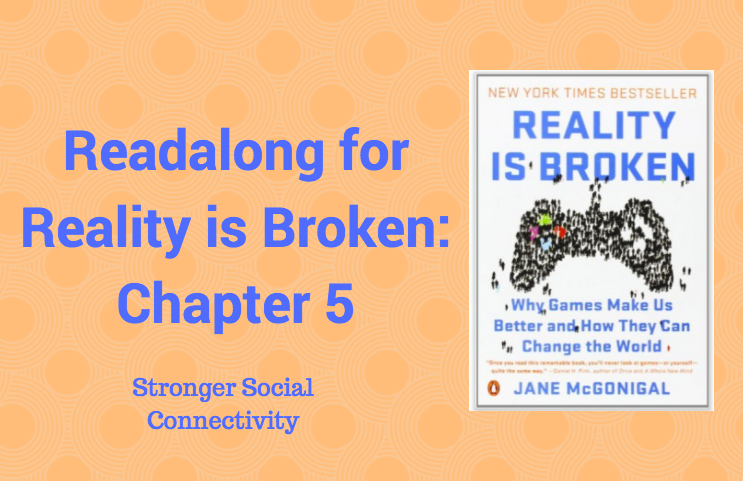Written by Christine Yee
For those of you who are truly interested in creating compelling games, here is something to consider: Should a game be judged favorably because players find it hard to break away from and spend countless hours immersed in it?
It would seem so, wouldn’t it? However, it is quite possible to feel compelled to keep playing even though the entire experience has become tedious and the novelty has worn off. Likewise, this same game might instead conjure the strong emotional rewards of true gratification and accomplishment which motivates the player to keep playing.
The difference has to do with two key areas:
-
The standard use of behavioral conditioning principles
-
The strategies which engage a sense of Unpredictability as well as Curiosity (Core Drive #7), inspiring the player to find out more.
An understanding of “operant conditioning” will help you understand the fundamental principles that drive behavior. But to go beyond this level, it is important to engage the players’ mental and emotional thirst for curiosity so that they would want to continue playing and explore circumstances that are unpredictable, despite having little sense of control. This experience is vastly more rewarding than simply being in a conditioned state, practically on autopilot. Knowing this distinction will help you become better at recognizing and discerning the finer points of quality game design.
BF Skinner and Operant Conditioning
Some games compel players to reliably perform certain behaviors again and again. Why is this? Psychologists have discovered that behaviors are fundamentally learned through a process of association. Individuals learn to react in a certain way in response to a particular stimulus. This is done by rewarding the behavior. The subject ultimately learns to react in a specific way to the stimulus.
Skinner’s Experiments
Initial studies in this area involved animals and involuntary reactions such as salivation. Later, a psychologist named BF Skinner took these findings by applying reward associations to voluntary behaviors.
The term, “Skinner box” pertains to an actual box designed by Skinner to study the pecking behavior of pigeons. The box contained a button. The pigeon was placed in the box and pecked at random. Some of the pecks would strike the button, causing food to be released. The pigeon eventually learned to peck specifically at the button to obtain food.
However, with just about any organism, once biological drives like hunger and thirst are met, the subject reaches a point of satiation. And this reduces the instances of the behavior. Biological rewards that satisfy physiological drives are regarded as primary reinforcers.
Similar phenomenon extends to human subjects. People learn to perform repeated actions to obtain rewards that are valuable to them. Reinforcement beyond the realm of biological drives are labeled as secondary. Subjects are less likely to become satiated and will continue to perform target behaviors at a high rate.
Operant Conditioning – Ways to Sustain High Rates of Behavior
In the initial stages rewarding each instance of behavior is important for sustaining it. But then the frequency reaches a plateau. One way to increase the rate of performance is to administer rewards on an intermittent schedule. In other words, behaviors would be reinforced according to certain pre-determined schedules. Here are some examples of schedules:
-
After specific intervals of time
-
After a given number of behaviors performed
-
Rewarded randomly (think Core Drive #7, Unpredictability & Curiosity)
The rewards become more difficult to attain and the subject is forced to work harder or more persistently to obtain them.
Another way to increase the rate of the desired behavior is to issue rewards that carry a stronger reinforcement value for the subject. For example, Skinner’s pigeon might receive a more delicious piece of food than the original reward.
As another example, a human subject might receive a larger sum of money for performing a required task.
Whether the reward becomes less accessible, or is swapped for something more valuable, adds an element of Unpredictability. Individuals or even animals become curious about when and how they can obtain the coveted reinforcer.
Gambler’s Fallacy
In terms of games, Skinner discussed the issue of gambling. People have realized that casino games are rigged and that an actual occupation offers more promise for long term financial gain. But gamblers persist in gambling despite their better judgement. According to Skinner, this phenomenon can largely be explained by operant conditioning principles.
Operant Conditioning and Today’s Games
Likewise, many of today’s video games rely on these same principles to keep players glued to their console or device. They work on the basis of scheduled reinforcement. Although this can effectively keep individuals playing for countless hours, the overall experience loses its satisfaction since behaviors are simply conditioned, much like using a carrot on a stick without thoroughly engaging the mind and emotions
Going Beyond the Skinner Box With Core Drive 7
Without a doubt, operant conditioning is quite powerful. However, many games employ this tactic, making the overall experience rather contrived and gimmicky.
Ultimately game designers would do best to avoid relying excessively on Skinnerian tactics. One effective route is to incorporate Core Drive 7: Unpredictability and Curiosity beyond the use of reinforcement schedules and upgrading the type of reward given.
When Curiosity Is Enthralling
Think for a second about experiences in your life where you were genuinely curious and felt a thrill in not knowing what to expect. Maybe you are reminded of birthdays or Christmas presents. Or some of your favorite books, movies and (of course) games may have also evoked a sense of mystery and a drive to wonder and learn more.
By exercising a greater degree of imagination and innovation, the natural curiosity of players can be evoked. These days, it is rare for many of us to truly become enraptured in wonderment and curiosity, like when we were children. So a game that is able to accomplish this will truly set itself apart from all others that rely on standard, commonplace designs and mechanisms.
When motivated by a sense of curiosity, users are driven to keep playing and even try out actions they’ve never performed before just to see what will happen next. Novelty becomes an important element to inspire interest. For example, this is best illustrated when players are placed in situations that are unfamiliar and unrecognizable to them.
So in contrast to the blatant use of mechanical Skinner box principles, game designers may want to concern themselves with the question of how they want their users to actually feel.
The spectrum of human emotions is quite vast. And a good game can elicit a variety of feelings such as inspiration, pride, fear, and joy by employing intelligent design strategy.
Isn’t Unpredictability and Curiosity Black Hat?
In the Octalysis Framework, Unpredictability and Curiosity is indeed considered to be a Black Hat Core Drive. Whereas White Hat gamification enables players to feel positive and powerful, Black Hat gamification causes players to perform actions because they feel a lack of control over their situation.
As a real life example you may decide to invest in construction and home improvement enhancements that would make your living space and possessions safer and less likely to be damaged during an earthquake. You are not in control of natural disasters. And this is what prompts you to act.
Of course, there are many types of situations that are unpredictable and cause individuals to feel fear and loss of control. But as seen throughout the previously mentioned examples, there are also unpredictable situations that have nothing to do with fear, but rather evoke emotions of excitement and even positive anticipation.
Game designs which promote a sense of Unpredictability and satisfies one’s Curiosity can invoke right-brained aptitudes. Rather than making logical, calculated behavioral choices, a player would simply decide to explore, try out new things and see what happens which leads to an overall enjoyable experience. Sure they may feel powerless with little to no sense of control, but they can also feel excited and decide to just roll with the situation, eager to try out different actions just to satisfy their curiosity.
Your Players and How They Will Remember Your Game
Although sheer operant conditioning is one way for players to feel addicted to a game it is not the best strategy for getting users to feel genuinely satisfied with their experience. While they are in fact propelled by their curiosity and an innate drive to confront unpredictable situations, conditioning only works at the most basic level of associations between the stimuli and the behavior(s).
On the other hand, expanding upon Core Drive 7 through novelty, a sense of mystery and an overall desire to entertain and engage players will surely cause them to look back upon the game as being unequivocally time well spent.










3 responses to “Gamification and Operant Conditioning”
It’s pretty shocking that designing a game to be “more addictive” is not only encouraged but applauded.
The only real benefit to a game being more addictive is to keep people engaged for extended periods of time. The fact that someone may “lose interest” after a certain period of time doesn’t necessarily mean they won’t return. Older games were never guided by these principles and people kept coming back regardless. They were just quicker to pick up and put down. They were what people classify nowadays as “casual” style gaming.
Now, unfortunately, society sees it as a positive thing to design games that could potentially be destructive for certain individuals that are susceptible to addiction. But this isn’t ever taken into consideration. The addict is seen as the exception, and it’s “their fault”.
It really is sad to see articles like this. Nothing against the author, because this is just how things are now, but I do hope we reach a point where the industry has to be a bit more accountable. Someone going without food and drinking because of something being designed to be more addictive is not a positive thing.
Excellent thoughts, curiosity and a sense of mystery are powerful tools indeed. Nevertheless the feel of confort and security of doing something you know and where you can easily manage the outcome is often seek after too.
As I was reading the article I thought about how many times a child see the same cartoon, and how much he enjoy it after the second because he KNOWS what’s going to happen and all anxiety and uncertainty has been removed.
So I wonder how to determine which one will do the best in order to keep players engaged.
Stay awesome!
Hey Christine, thanks for this insightful article. I love how you dive deeper into the psychological foundations and your remark that some core drives may not always be categorized easily into certain categories.
Looking forward to read more articles from you! 🙂